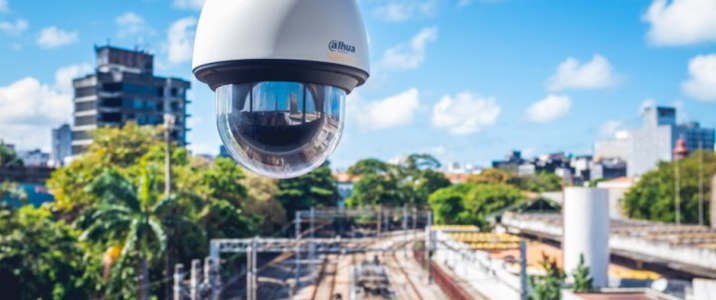 How much do you know about PTZ cameras and technology? Here is a quick test, courtesy of Dahua, to find out if you are fully up to date with the latest developments…
How much do you know about PTZ cameras and technology? Here is a quick test, courtesy of Dahua, to find out if you are fully up to date with the latest developments…
Pan Tilt Zoom (PTZ) cameras are useful because they can pan, tilt, and zoom, of course, but some models also have features that take your security system to the next level. Test your PTZ knowledge with this quiz.
True or False? IR illumination is always ineffective on PTZs because the zoom distance far exceeds the capability of integrated IR system.
False. Zoom priority mode, available with select Dahua PTZs, provides optimal IR coverage at any zoom setting. The camera has different sets of integrated IR illuminators that turn on and off according to whether the camera is in wide angle mode or zoomed in. This gives you even illumination at wide angles and reduced power at narrow angles.
True or False? All long-range PTZ cameras suffer from issues such as blurriness, shakiness, and slow focus.
False. Dahua’s Predictive Focus Algorithm (PFA), available on select PTZs, eliminates these issues and improves video clarity with high-speed, continuous autofocus. PFA uses advanced focusing technology to ensure the accuracy and predictability of subject-distance adjustment. This means that unlike traditional PTZs where the image snaps back into focus when the camera repositions itself, cameras with PFA maintain focus throughout the zooming process. See PFA in action here.
Which feature controls the pan-tilt-zoom actions of the camera to automatically track a target in motion?
Autotracking. This feature, available on Dahua’s 5” and above AI PTZ cameras, lets the PTZ detect a moving target and automatically follow it throughout the camera’s range of motion. This capability can be further enhanced by activating the IVS feature on the PTZ, which will trigger it to track a target as it crosses a particular area of demarcation. Watch autotracking in this video.
What does EIS stand for and what does it do?
Electronic Image Stabilisation counteracts some of the vibration – and the accompanying blurring – inherent to a windy environment or a location with traffic nearby. EIS provides a steadier field of view and expands the mounting options, since the PTZ can then be installed on a pole or in a hanging pendant formation without being unduly affected by vibration. Plus, with less camera movement, you save on bandwidth and storage space!
What’s more, other PTZ cameras are also equipped with OIS or Optical Image Stabilisation. This hardware solution doesn’t require image cropping as it uses full-sensor readout to capture images. It helps reduce image distortion and produces more natural videos that are significantly better than EIS.

